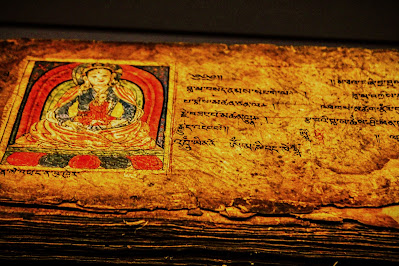Consciousness and Quantum Reality through Science, Metaphysics, and Yogic Wisdom
The question of consciousness—what it is, where it comes from, and how it interacts with the physical world—remains one of the most profound mysteries of existence. This article of mine explores how Modern science, ancient metaphysics, quantum physics, and Yogic scriptures all offer tantalizing glimpses into this mystery, how these perspectives intersect and enrich our understanding of the layers of consciousness.
 |
| Quantum Consciousness |
The Enigma of Consciousness
From a classical scientific view, consciousness was long assumed to emerge from the complexity of the brain. But this materialist perspective finds it difficult to account for subjective experience, or qualia as philosophers refer to it. Neuroscience can correlate brain activity with awareness, but it does not yet explain how neurons produce the sense of “I.”
Here is where quantum physics and ancient Yogic teachings converge—both hint that consciousness may not just arise from matter, but rather, matter itself might emerge from consciousness.
Quantum Theory and Consciousness
Quantum mechanics, the most successful theory in physics, challenges the notion of an objective, observer-independent reality. The famous double-slit experiment shows that particles behave as waves until observed, at which point they ‘collapse’ into a definite state. This phenomenon led physicist John Wheeler to propose the participatory universe, where observers play a fundamental role in reality’s manifestation.
Nobel laureate Eugene Wigner went further -
"It was not possible to formulate the laws of quantum mechanics in a fully consistent way without reference to consciousness."
Wigner suggested that consciousness might be fundamental to reality, not just an emergent property.
Metaphysics and Yogic Analogy
Long before quantum physics, Indian Yogic philosophy and scriptures like the Upanishads and Yoga Sutras described consciousness as the ground of being—Brahman, the infinite awareness from which all forms emerge.
Yoga describes five koshas (sheaths) or layers of consciousness -
1. Annamaya kosha—the physical body.
2. Pranamaya kosha—the energy or life-force body.
3. Manomaya kosha—the mind and emotions.
4. Vijnanamaya kosha—the intellect or wisdom body.
5. Anandamaya kosha—the bliss sheath, closest to pure consciousness.
These layers mirror the idea of deeper, subtler states of being, akin to quantum states, where reality becomes more indeterminate and unified the deeper we go.
Recent Scientific Research
While still controversial, some researchers are investigating quantum processes in the brain. Notable among them -
- Sir Roger Penrose and Stuart Hameroff’s Orch-OR theory proposes that microtubules in neurons perform quantum computations, potentially linking consciousness to the fundamental structure of reality.
- In 2020, studies published in Physics of Life Reviews provided evidence that quantum effects could influence brain processes, though these ideas remain debated.
- Researchers at MIT and the Max Planck Institute have explored panpsychism, the hypothesis that consciousness is a property of all matter, supported by mathematical models showing consistency with quantum field theory.
These developments suggest that consciousness might not merely reside in the brain but could be woven into the fabric of spacetime itself.
Layers and Depths of Consciousness -
Using concepts from Yogic and quantum theory, we can imagine consciousness as a multi-layered reality -
- Waking consciousness—localized, bound by sensory perception and the brain.
- Deeper patterns and reflexes that are frequently concealed are found in the subconscious and unconscious layers.
- Collective or universal consciousness, as described by Jung and echoed in Yogic Samadhi, where individual awareness merges with the infinite.
- Quantum or non-local consciousness—possibly transcending time and space, hinted at by entanglement and superposition.
These layers may correspond to increasing subtlety and decreasing differentiation — from the solid “particle” experience of the waking world to the unified “wave” nature of pure awareness.
The journey to understand consciousness is not just scientific or philosophical—it is experiential. Yoga teaches that the ultimate observer is within; quantum physics argues that the observer shapes reality. Both invite us to look deeper.
As Rumi beautifully said,
"You are not a drop in the ocean. You are the entire ocean in a drop."










Comments
Post a Comment
If you have any questions, do write to us or mention them in the comment box. In our next article, we will definitely try to address them.